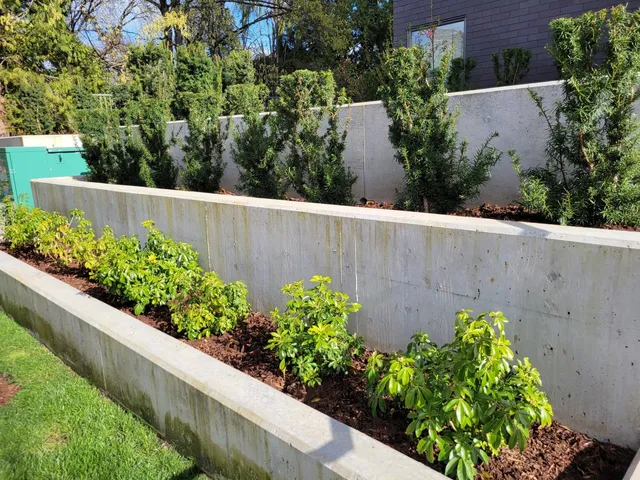
Building a Concrete Retaining Wall: Tips and Ideas
Building a concrete retaining wall is a fantastic way to enhance the landscape of your property while also providing functional support. Whether you have an uneven yard, a steep slope, or want to create a designated patio area, a concrete retaining wall can be the perfect solution. In this article, we will explore the purpose of a concrete retaining wall, the benefits of choosing concrete over other materials, different designs and ideas for your wall, as well as the planning, building, and maintenance processes. By the end, you will have all the information you need to embark on your own concrete retaining wall project.
Welcome to Keystone Industries’ Concrete Retaining Wall page! We are your trusted experts in designing, building, and repairing durable concrete retaining walls in the Portland and Vancouver metropolitan areas. Our team of skilled professionals brings years of experience to every project, ensuring top-notch craftsmanship and exceptional results. Whether you need a retaining wall to prevent soil erosion, create terraced landscapes, or add structural support, we have the expertise to deliver tailored solutions that meet your needs. From concept to completion, we prioritize quality, safety, and customer satisfaction. Let us help you enhance the functionality and aesthetics of your property with our reliable concrete retaining wall services. Contact us today to discuss your project and discover the difference Keystone Industries can make for your outdoor spaces. check out our Concrete Page
What is a concrete retaining wall and why do you need one?
A concrete retaining wall is a structure designed to hold back soil and prevent erosion while creating leveled areas for landscaping purposes. It is commonly used in yards with steep slopes or areas prone to erosion. By building a concrete retaining wall, you can create flat surfaces for planting gardens, constructing patios, or even building driveways.
The benefits of choosing a concrete wall over other materials
When it comes to selecting materials for your retaining wall, concrete offers several advantages over other options. Concrete walls are known for their durability and long lifespan. Unlike timber or paver walls, which may rot or shift over time, concrete walls can withstand the elements and provide lasting stability to your landscape. Additionally, concrete allows for more creative design options, as it can be molded into various shapes and finishes.
Exploring different designs and ideas for your retaining wall
Concrete retaining walls offer endless possibilities for customization. You can opt for a minimalist design that seamlessly blends into the surroundings or go for a more decorative approach with textured finishes and intricate patterns. Consider incorporating retaining wall blocks in different sizes and colors to add depth and visual interest to your landscape. Whether you want a modern, sleek look or a rustic, natural appearance, there are plenty of design ideas to suit your style.
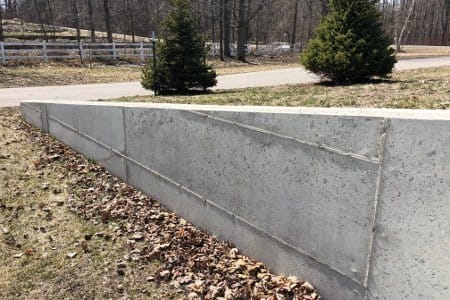
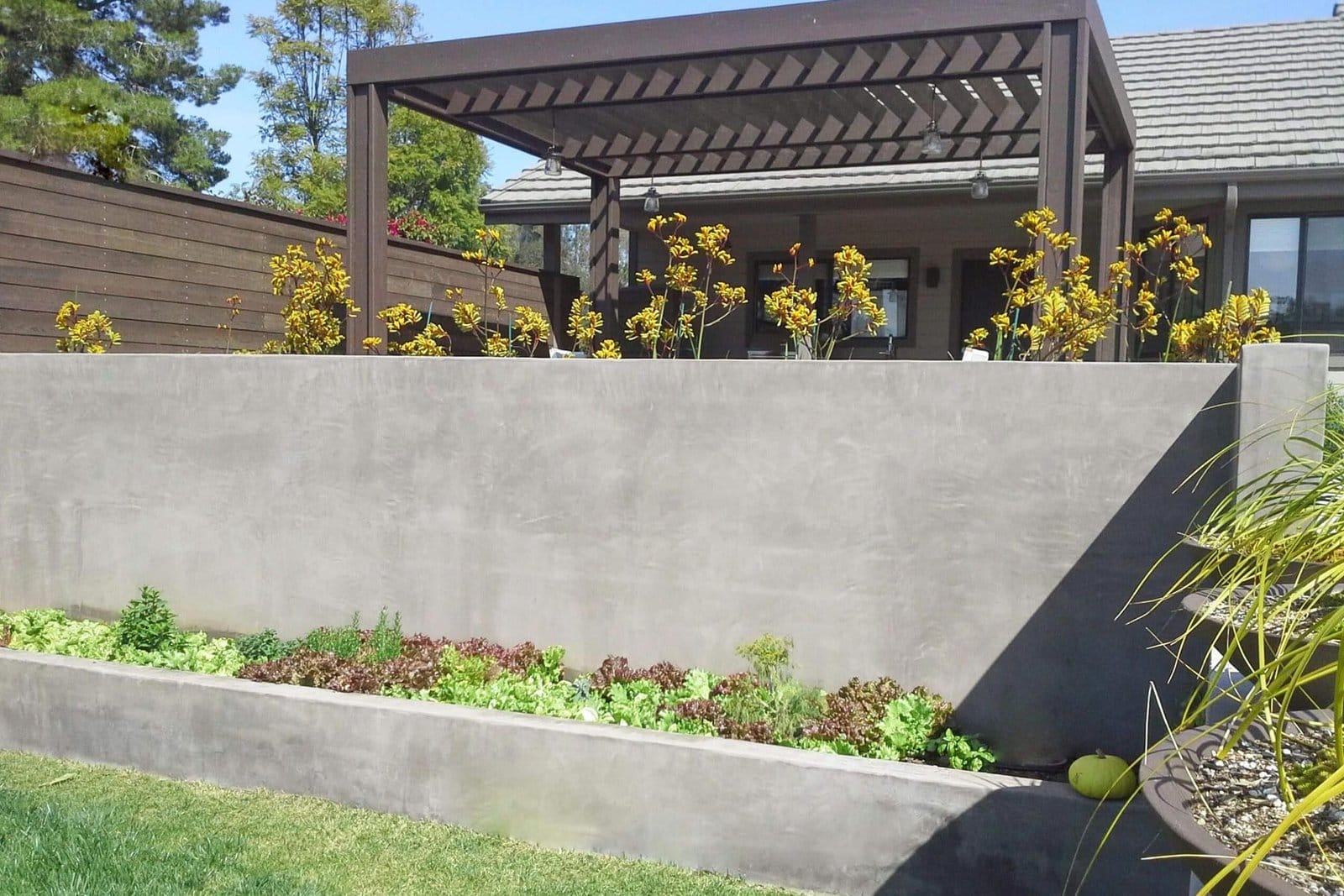
Planning and preparation
Before starting any construction, it is crucial to properly calculate the dimensions of your retaining wall. The height, length, and width of the wall will depend on the slope of your yard and the purpose of the wall. Consider consulting a professional or using online resources to ensure accurate measurements for a sturdy and effective structure.
Choosing the right materials for your project
Selecting the appropriate materials for your concrete retaining wall is essential for its longevity and appearance. Concrete block retaining walls are a popular choice due to their strength and versatility. You can choose from a range of block shapes and sizes to create the perfect look for your wall. Additionally, make sure to use high-quality concrete mix, rebar for reinforcement, and appropriate drainage materials.
Creating proper drainage to prevent damage to the wall
Proper drainage is crucial to prevent water buildup behind the wall, which can lead to damage and instability. Ensure that your retaining wall has a proper drainage system in place, such as weep holes or gravel backfill, to redirect water away from the wall and prevent hydrostatic pressure.
Building your concrete retaining wall
The first step in building a concrete retaining wall is to excavate the area where the wall will be constructed. This involves digging a trench and creating a level surface for the footing. The footing acts as a solid base for the wall and helps distribute its weight evenly.
Step-by-step guide on pouring the concrete and setting the blocks
Once the footing is prepared, you can start pouring the concrete and setting the blocks. Begin by placing the first row of blocks, ensuring they are level and aligned. Use a trowel to spread a layer of mortar between each block to create a strong bond. Repeat this process for subsequent rows, periodically checking for levelness and alignment. Finally, fill the cores of the blocks with reinforced concrete and insert rebar to provide additional strength.
Tips for backfilling and compacting the soil behind the wall
After the concrete has cured, it’s time to backfill the space behind the wall with soil and compact it properly. Use a compactor or hand tamp to compact the soil in layers, ensuring it is firmly packed to provide stability to the wall. Proper compaction will prevent settling and potential damage to your retaining wall.
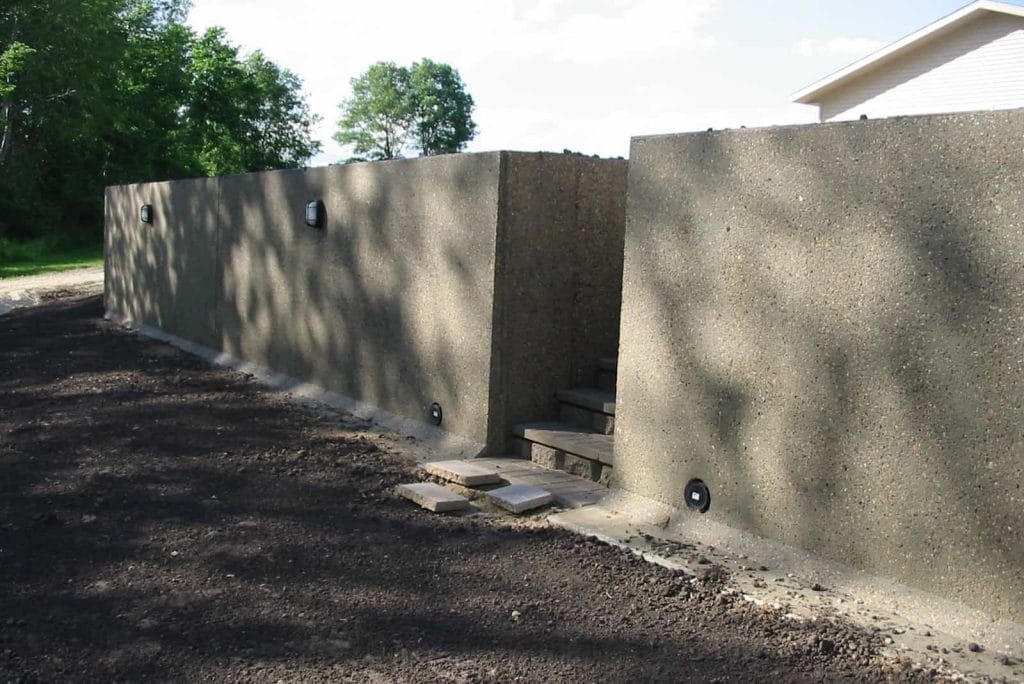
Finishing touches and maintenance
Enhancing the look of your retaining wall with decorative concrete finishes
To enhance the appearance of your concrete retaining wall, consider applying decorative concrete finishes. These finishes can mimic the look of natural stone, brick, or even wood, giving your wall a unique and aesthetically pleasing touch. Experiment with different textures and colors to achieve the desired effect.
Choosing the right plants to complement your retaining wall
A well-designed concrete retaining wall can serve as a backdrop for a beautiful garden. Select plants that complement the style and height of your wall. Consider plants with cascading foliage that can add a softening effect or tall shrubs and ornamental grasses to provide additional visual interest.
Maintaining and controlling erosion around your wall
Maintaining your concrete retaining wall is essential to ensure its longevity and functionality. Regularly inspect the wall for any signs of damage or erosion. Remove any debris or vegetation that may accumulate behind the wall, as it can contribute to water retention and potential damage. If erosion is a concern, consider installing erosion control measures such as geotextiles or rocks at the base of the wall to redirect water flow.
Additional considerations for specific situations
Building a retaining wall on a slope
Constructing a retaining wall on a slope requires additional planning and structural considerations. You may need to use specialized blocks or reinforcing techniques to ensure the stability of the wall. Consulting with a professional engineer or contractor is highly recommended for slope projects.
Using natural stone for a more rustic look
If you prefer a more rustic and natural aesthetic, consider using natural stone for your retaining wall. Stone retaining walls offer an organic and timeless appeal. They can be dry-stacked or mortared, depending on the desired look and structural requirements.
Creating a retaining wall for a patio area
A concrete retaining wall can create a defined and level space for a patio area. Consider extending the wall vertically to serve as a seating area or incorporating built-in planters for added greenery. This can transform your patio into a functional and visually appealing outdoor living space.
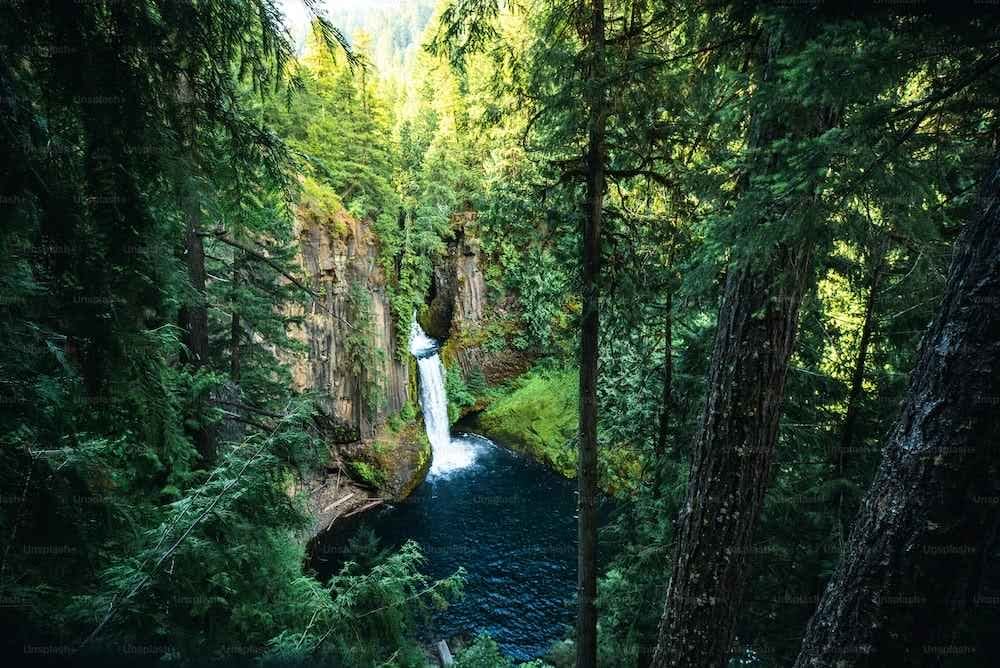
Oregon
Portland, Beaverton, Gresham, Hillsboro, Corbett, Cornelius, Fairview, Forest Grove, Gladstone, Happy Valley, King City, Lake Oswego, Milwaukie, Oregon City, Sherwood, Tigard, Troutdale, Tualatin, West Linn, Wilsonville, Wood Village, Aloha, Beavercreek, Boring, Cedar Mill, Clackamas, Damascus, Dunthorpe, Garden Home, Raleigh Hills, and West Slope

Washington
Vancouver, Battle Ground, Camas, Washougal, Ridgefield, La Center, Yacolt, Hazel Dell, Minnehaha, Salmon Creek, Walnut Grove, Orchards